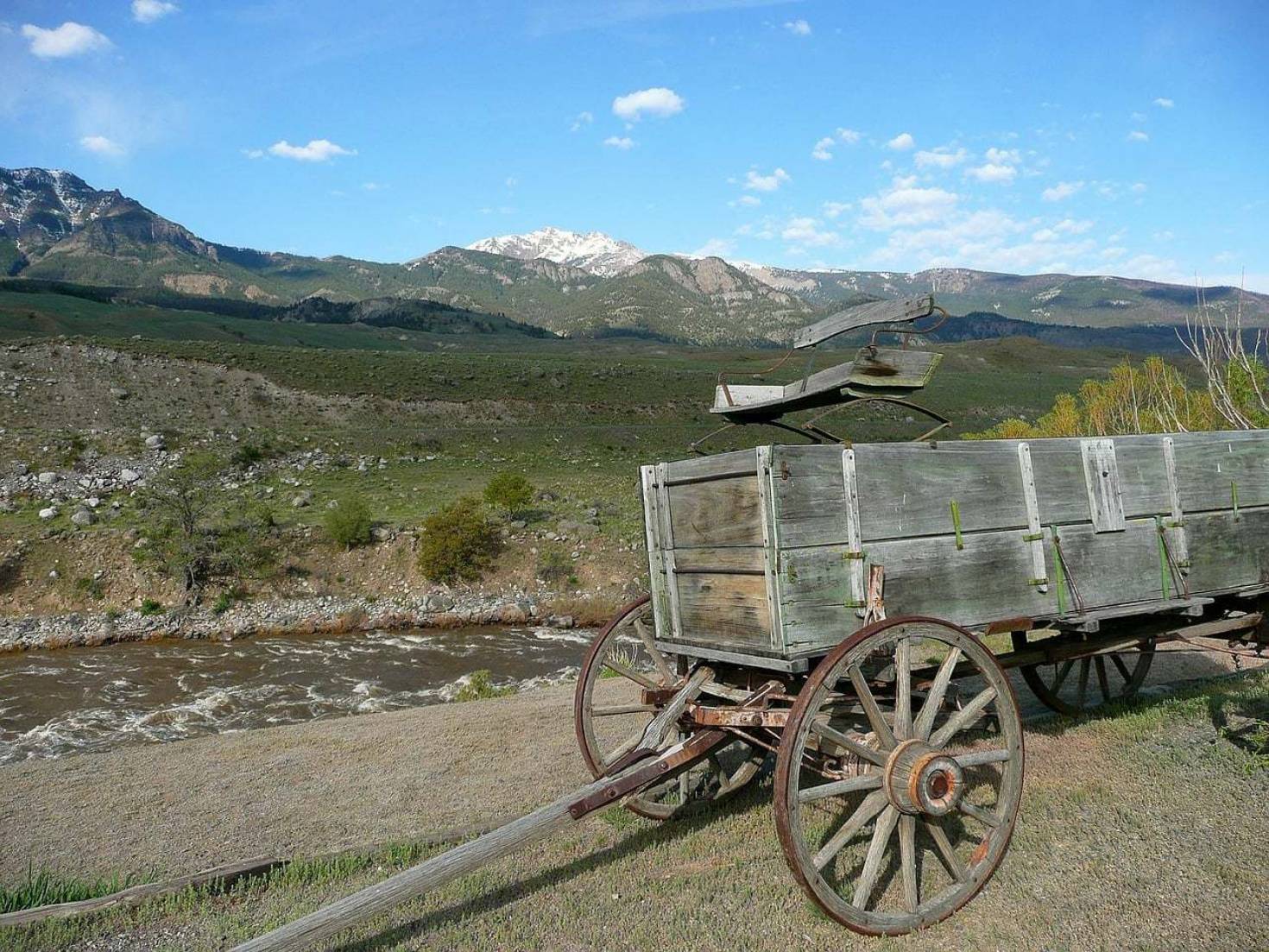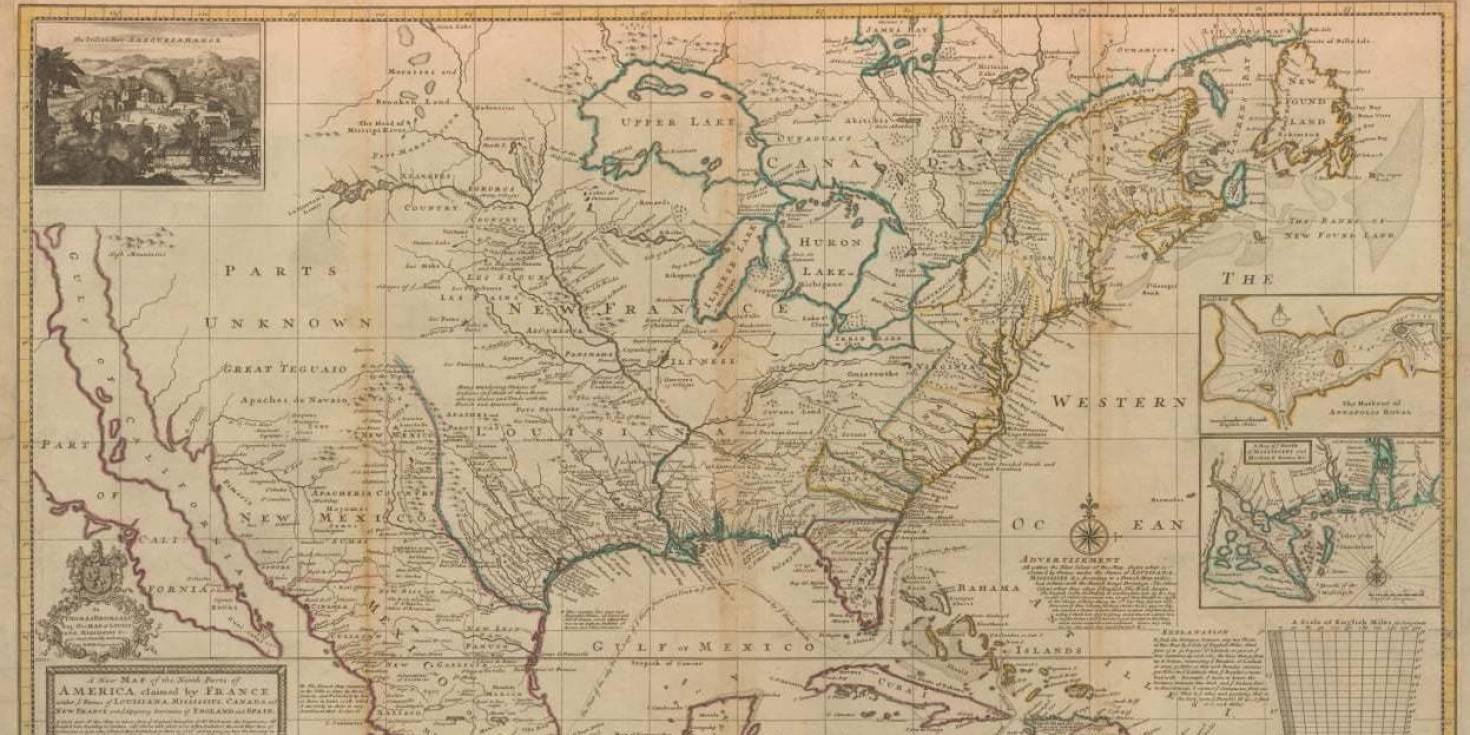Manifest destiny was a term used throughout the 19th century by people who believed that the United States' borders could, should, and would extend from coast to coast. They were certainly correct in their belief it could and would and these are a few of the major acquisitions of land in the United States that helped make it possible. Major in this case is meant as large, not necessarily more or less important than smaller territorial gains. From a land perspective, this is how America came together.
The Treaty of Paris
In 1783, the Treaty of Paris ended the Revolutionary War and recognized the former 13 colonies as a sovereign nation. It was negotiated in Paris, France (where it got its name). John Adams, Benjamin Franklin, and John Jay represented the 13 colonies, while David Hartley represented Great Britain and King George III. This deal established the original borders of the United States and included some 890,000 square miles. It roughly stretched from the Eastern Seaboard to the Mississippi River in the west. Although this land was acquired as a result of winning the war and wasn't purchased, a consequence was a massive debt of over $11 million ($307.5 million in 2022) owed to foreigners and domestic debts of more than $65 million ($1.8 billion in 2022).
The Louisiana Purchase
In 1803, the Louisiana Purchase nearly doubled the size of the United States and covered around 828,000 square miles. Thomas Jefferson sent James Monroe and Robert Livingston to negotiate a deal with Napoleon Bonaparte in hopes of acquiring the land from France. They settled on a price of $15 million ($393 million in 2022) which averaged about 3 cents an acre. $11.25 million was paid directly and $3.75 million in assumed debt was forgiven from the Revolutionary War. The purchased territory included what today would be the better part of 13 states, from the Mississippi River to the Rocky Mountains, and from the Gulf of Mexico to Canada.

The Adams Onis Treaty
In 1819, the Adams Onis Treaty relinquished Florida (east and west) to the United States and helped settle boundary disputes between the U.S. and Spain. The negotiating was done by John Quincy Adams from the U.S. and Luis de Onis from Spain. They struck a deal that totaled around 72,000 square miles for $5 million ($116.7 million in 2022) in claims by U.S. citizens against Spain. The land acquired would be present-day Florida and the southern parts of Alabama and Mississippi.
The Texas Annexation
In 1845, the Texas Annexation added Texas to the United States after years of efforts from American settlers who were successful in gaining Texas Independence and had been seeking to join the U.S. The decision to annex Texas included an area of just less than 390,000 square miles and was welcomed by the majority of Southerners, but opposed by many in the North, who did not want another slave state and a different culture added to their nation.
The Oregon Treaty
In 1846, the Oregon Treaty settled a long-standing dispute between the U.S. and Great Britain over who controlled the Oregon Territory. The treaty included an area of over 286,000 square miles and established the United States border at the 49th parallel to the Strait of Georgia, which meant the acquisition of Washington, Oregon, Idaho, and parts of Wyoming and Montana. This territory dispute with Great Britain was a large part of Democratic candidate James Polk’s 1844 presidential campaign platform.
The Treaty of Guadalupe Hidalgo
In 1848, the Treaty of Guadalupe Hidalgo (also known as the Mexican Cession) was a surrender signed by the Mexican government as a result of losing the Mexican American War. The U.S. bought over 525,000 square miles for $15 million ($562.6 million in 2022) and settled claims of U.S. citizens against Mexico for $3 million. This purchase added what is modern-day California, Nevada, and Utah, along with parts of Arizona, Colorado, New Mexico, and Wyoming.

The Gadsden Purchase
In 1853, the Gadsden Purchase established the final boundaries of the southern United States. James Gadsden was sent by the U.S to negotiate with Mexican General Santa Anna. The United States paid Mexico $10 million ($384.8 million in 2022) for almost 30,000 square miles of what is present-day southern Arizona and New Mexico. This may seem like a steep purchase price compared to other acquisitions, but this area of land was a strategic location for the southern transcontinental railroad.
The Purchase of Alaska
In 1867, the Purchase of Alaska was made by the United States from Russia. The area totaled over 586,000 square miles and was bought for $7.2 million ($144 million in 2022), which averaged about 2 cents an acre. Russia was certainly willing to sell on account of a fear of upcoming war with Great Britain and Alaska’s remote location, making it challenging to occupy and defend. William Seward did the negotiating with Russia and the purchase was highly criticized. The Alaska Purchase temporarily became known as “Seward’s Folly”, because it seemed like the U.S had just bought a remote wasteland. This changed in 1896 when gold was discovered along the Klondike River, and since has produced a large percentage of America’s oil and seafood. Was Seward brilliant, or just lucky?
Hawaii and the Spanish Colonies
In 1898, Hawaii and the Spanish Colonies were acquired by the United States from Spain for a total area of around 125,000 square miles. The Hawaiian Islands, Puerto Rico, and Guam were ceded to the U.S. and the Philippines were purchased for $20 million ($714 million in 2022).

If you want to put the size of these territories in perspective, check out our article highlighting how big is an acre of land.
A large price had to be paid for America to become the superpower as we know it today. This does apply to cash paid out but more importantly to lives lost as a result of territorial conflict. In the acquisitions mentioned above approximately 37,000 U.S., 24,000 British, and 25,000 Mexican soldiers died while the government paid out around $148.2 million. The net result is today the United States totals 3.797 million square miles which translates into 2.3 billion acres. If you want to own your own slice of the U.S., make sure to check out our land for sale.

